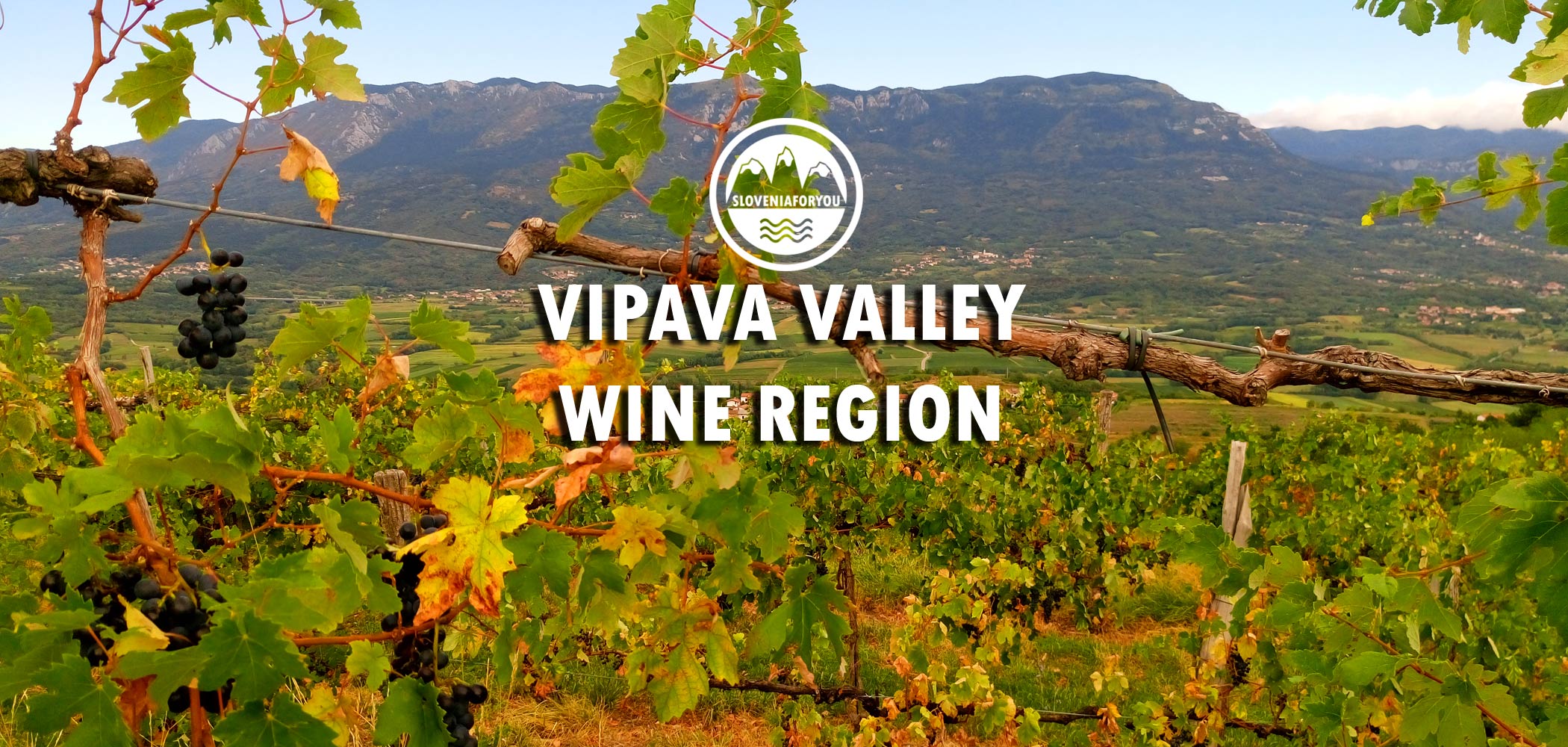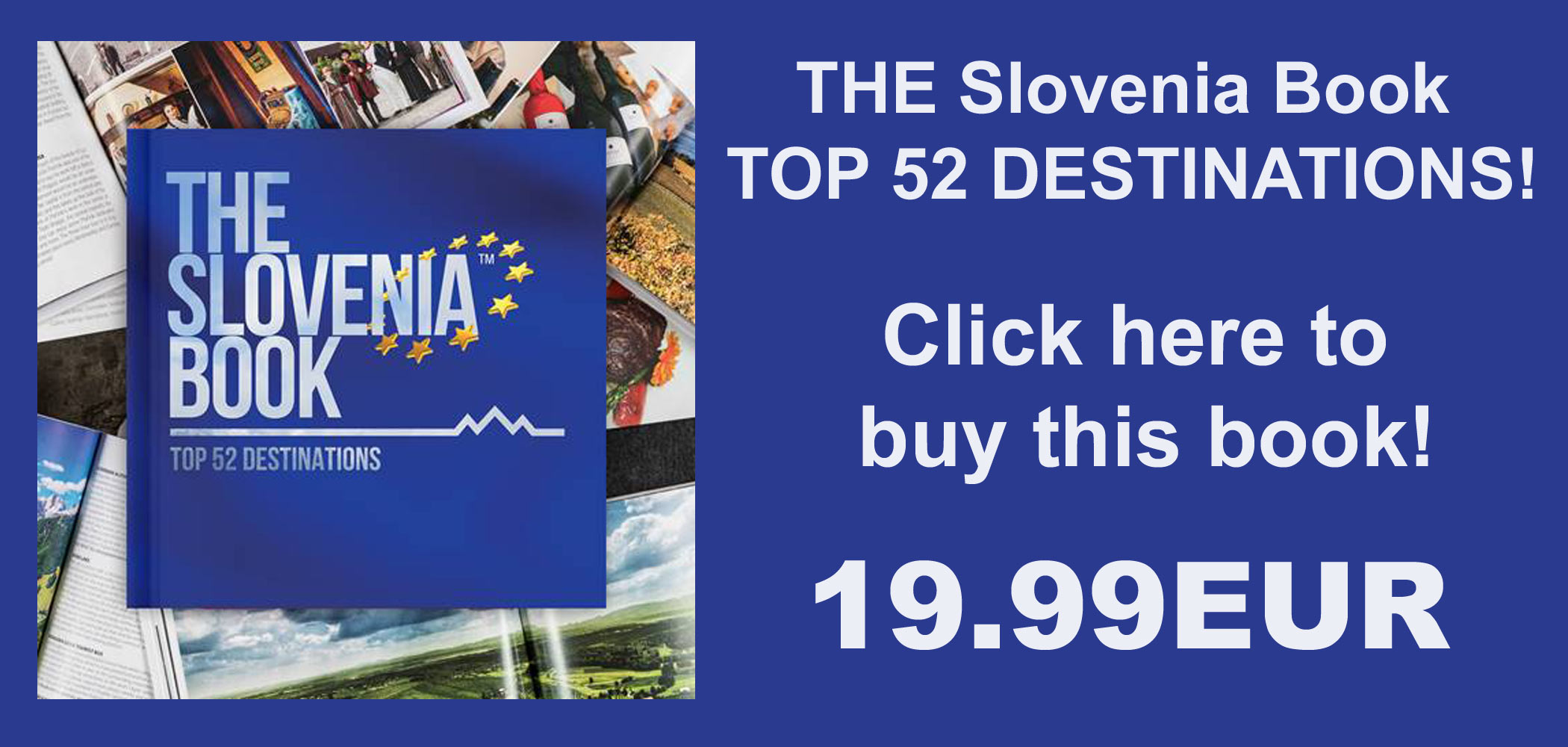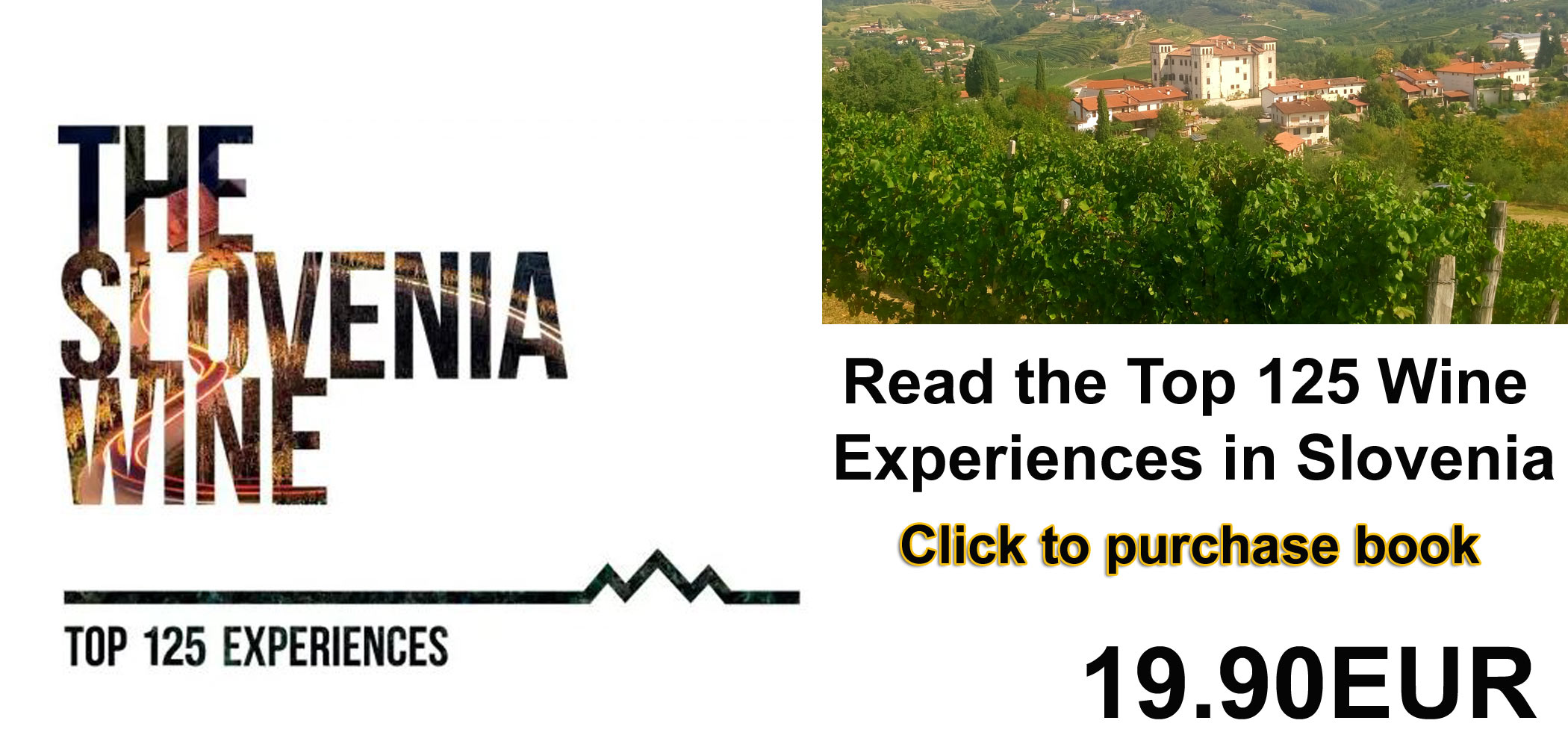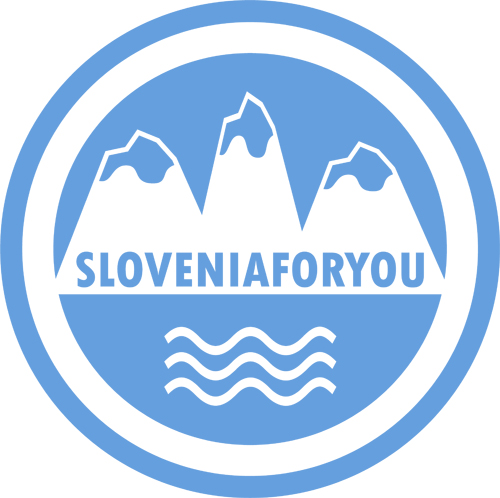

"We really enjoyed the day trip. The two wineries that you included were perfect as they were quite different from each other." - Julie (Switzerland)
Our complete wine guide for the:
VIPAVA VALLEY REGION
welcome
dobrodošli
Sloveniaforyou
Slovenia's no1 independent website!
Where is the Vipava Valley?
Where to start?
How to get to the Vipava Valley?
What varieties is the Vipava Valley famous for?
Vipava Valley Wine Tours
Vipava Valley Accommodation
Leading Estates
History
Climate
Soil
Wine Touring
Checklist
Festivals

WHERE IS THE VIPAVA VALLEY?
The VIPAVA VALLEY is a lush green expanse, with rich soils and moderate rainfall, that straddles the Vipava River on its way to the Adriatic.
Stretching from Nova Gorica out west to Vipava to the east, the Vipava Valley snakes through an area bounded by the Trnovo Plateau to the north and the Karst to the south.
The busy freeway linking Italy with Ljubljana runs right through the heart of the valley and you can see a myriad of villages on either side like that line small hills and the level plains.
Ajdovščina and Vipava are the main towns here and the area is perfect for a relaxing getaway as it is relatively free of mass tourism with only a sprinkling of tourists venturing out to the
tourist farms and wineries. Not to say the area is bereft of things to do, there is plenty to keep you busy if you wish.
From Nova Gorica visit villages like Crnice, Vrtovin and Brje. Vipavski Križ is a striking town atop a hill with a church at each end and stunning vistas of the valley.
The circle of Vrtovce-Smarje-Gaberje-Planina is a nice drive. Towards the eastern end of the valley are the renowned wine villages of Slap, Goče, Mance and Lože.
We recommend you kick back and enjoy the hospitality and scenery in the Vipava Valley.


WHERE TO START?
If you are not booking a tour (which is a good idea so you can drink and not drive), then a car is really a necessity to travel in the region and the Vinoteka at Vipava is a good place to start.
They have a modern tasting room lined with wines according to their geographical locations/villages around Vipava and the producers within those areas.
This will set you up nicely for the day as they can explain everything about the local labels and varieties they produce. You will be an expert before you hit the road!
Pop next door to the information centre where they have maps, information and can call ahead to see which wineries are open for tastings.
Of course let them know Sloveniaforyou sent you!
Also take time to walk around Vipava as it is a little gem of a town with good restaurants set along the sources of the Vipava River.
THE VINO
They also take their wines very seriously here and there are a few villages and producers that hog the limelight. Names like Ivan Batič, Matjaž Lemut – Tilia, Radivoj Lisjak, Valter Mlečnik
will feature strongly when you visit, but the region is also made up of hundreds of smaller vineyards where families contribute their produce to the bigger collective,
or simply make a few bottles themselves.
Viticulture is, in fact, the main agricultural sector in this fertile valley (60%) and vines cover over 3000 acres of its total area (350 km²).
The small, family-based vineyards are mainly concentrated on terraces in the higher areas where the excellent soil allows both white and red varieties to be
cultivated as well as a number of rarities to tempt any connoisseur. Wine-making is regarded as a way of life here.


HOW TO GET TO THE VIPAVA VALLEY REGION?
From Ljubljana, you take the main freeway towards Koper and the coast. After Postojna, take the turnoff on your right at Razdrto towards Italy and Nova Gorica.
As you make the descent you will see the Vipava Valley at the bottom, you have arrived! Vipava and Ajdovščina are on your right with many wineries situated on the left.
From Italy you arrive on the same freeway coming from Venice through Nova Gorica.
Of course if you don't have a car, please email us to arrange a transfer!


WHAT WINE VARIETIES IS THE VIPAVA VALLEY FAMOUS FOR?
ZELEN & PINELA (white)
The Vipava Valley Wine region is most well known for its dry whites, especially the Zelen and Pinela grape varieties that are unique to the Vipava Wine region.
Visitors particularly like the fruity, refreshing pinelas.
The first information on the varieties of Vipavska and their characteristics are found in the book Vinoreja (Winegrowing) by Matija Vertovec from 1845.
He mentions by name 18 “noble” white and 16 “less noble” white varieties, wherein Pinela and Zelen are counted among the noble varieties.
In 1909, the local agricultural newspaper Kmetovalec (Farmer) published an article with the insightful title
“Winegrowers of the Vipava Valley, Graft Zelen!” that recounted the claims of the Carniolan wine supervisor Skalicky,
who stated that the variety Zelen was highly sought after in Prague.
PINELA is a fruity refreshing white with a subtle bouquet and aroma, whereas ZELEN is slightly more robust with a distinctive flavour and pale yellow colour,
not incidentally as its name (zelen or green) would suggest. The varieties Zelen and Pinela are protected indigenous varieties of Slovenia.
PINELA
Wine from this variety is of a yellowish colour. On the nose, it has a distinctive, gentle and varietal fruity and flowery aroma. The flavour is full, very pleasant and harmonious.
The wine’s best traits are its freshness and drinkability as the variety normally contains higher amounts of acids.
The wine is best made young and fresh, while appropriate maturing brings out its noble, riper aromas. Alcohol content and extract are of medium level.
ZELEN
The wine is of a straw colour with accented greenish tones. Zelen has a gentle fragrance, with expressed fruity notes of apple and pear. On the nose,
it is rich, with an expressed varietal aroma and very pleasant.
Zelen is counted amongst semi-aromatic varieties as it gives wine with a rich harmonious and pronounced varietal flavour.
The aroma is complex and not easily compared with other aromatic profiles. The fullness of the flavour attests to the rich composition of the extract,
which shows on the palate through the extended release of sweet-sour sensations in a good balance.
WHAT OTHER VARIETIES ARE PRODUCED?
The selections of varietals as well as the proportion between whites and reds constantly changes as well; there are approximately 35 % red sorts and 65 % white sorts.
Fifty years ago there were mainly whites, but today the Vipava Valley’s vinegrowing region is also famous for its excellent red wines.
Merlot, Cabernet Sauvignon and Barbera have adapted themselves very well to Vipava Wine regions soil. On the market, along with the varietals, consumers can also find some of Vipava Wine region selection of mixed wines.
These wines captured the wine market in Slovenian regions more than four hundred years ago. "Vipavec" mainly consists of Malvazija, Rebula, Sauvignon and Laški Rizling.
PIKOLIT (Piccolito, Weiser Blaustinge)
PIKOLIT
The colour of Pikolit wine is golden yellow which with its intense aromatic bouquet consisting of peach, over-ripe apricots, dried fruit and honey.
Its flavour ranks it among high extract, rich and harmonious wines. If the wine is made from dried grapes, the colour tones will lean towards brownish.
OTHERS
Other varieties of whites are: Rebula (Ribolla
Gialla), Sauvignon (Sauvignon Blanc), Malvazija, Laški
Rizling (Welsh Riesling) and Chardonnay, while the reds are:
Merlot, Barbera and Cabernet Sauvignon.
Vipava vinegrowers also produce domestic varieties like: Klarnica, Poljšakica, Glera, Pergulin, Vitovska Grganja,
Pikolit and world famous Sivi and Beli Pinot
(Pinot Gris and Pinot Blanc), Rumeni Muškat (Yellow Muscat), Zeleni Sauvignon (Sauvignonasse), Prosecco, and red wines – Modri Pinot (Pinot Noir), Cabernet Franc, Refošk and Syrah.


Vipava Valley WINE TOURS
A typical Vipava wine tour
ONE or TWO WINERIES + SIGHTSEEING
The philosophies, the wines, the homemade cuisine, the local stories, the laughter, the sights of the valley. You will be amazed how passionate they are about their vino in the Vipava Valley.
It’s all about having a good time and learning something new. Expert, Enthusiast or Novice, You're invited, so book today!
What is the cost?
Private tour - email for a quote. Can be booked for any day with our partner depending on availability.
8 people per van.
Whats included?
- Pick up and drop off from Ljubljana or Vipava Valley/Brda
- Modern Van
- English speaking driver (no guide)
- Visit a hand picked winery for tastings of local varieties like Pinela and Zelen.
- Also accompanied by local cuisine like pršut and cheese.
- Listen as the winemaker describes the process of making wine in the Vipava Valley
- Visit the cellar and vineyards.
- Visit local sightseeing spots like Vipava, Sinji Vrh or Vipavski Križ.
- Local lunch is optional and can be included.
* If you staying in another location, please email for a quote!
* A guide can be hired to enhance the experience further, enquire for a quote!
* Winery to be confirmed depending on availability
* Tastings 25 - 35€ pp depending on winery
* Optional lunch from 25 - 45€ pp depending on restaurant.
* Any entry fees for sights not included.
How do we book?
Simply email us your details:
tourname (Vipava Valley), name, date, number of people, location, mobile number, any sightseeing preferences.
We will get back to you quickly with a quote!

WHERE TO STAY?
The homestead Majerija offers you the possibility of an exceptional experience in the Vipava Valley. Ten two bed rooms are available to you, painted with the themes of various herbs.
The restaurant is award winning and offers the very best of what the region has to offer.

Best welcome ever...that's the story of the Žorž. Started with wine-tasting plus you have a good breakfast, and the Rooms are freshly renovated. The owners are very, very, very friendly and obliging.
You are sure to be back!

This property is a peaceful Oasis surrounded by nature! Everything is brand new, well designed and thought out.
The wine they have in the rooms is amazing and made by the owners family. Perfect to recharge and the hot tub is great as well! Book today. 
This is a great property with everything you would expect and even most of the things you didn’t think you would need.
Very friendly and helpful host who is very hospitable and very helpful with suggestions about local sights and activities.
Great location with easy walking access to centre.

These rooms are just perfect! Recently renovated and they thought about every little detail. Great atmosphere, very clean and cozy.
The host is amazing and the garden is beautiful with great views! Couldn’t recommend this place enough! Book today!
LEADING ESTATES
Batič

The most precious part of Batič vineyards is located at 350-400 metres above the sea level. Nature’s perfection is found there, no morning dew appears and constant dry breeze protects the vineyards against diseases. They say the vines are protected by the microclimate and "Angels". Vineyards grow during warm days and cool nights and this specifically reflects in the purity of Vipava wines. Soil in Vipavska dolina consists of alternating layers of flysch sea sediment and sandstones, which make it the preferred vine-cultivating soil.
Most winegrowers in the Vipavska dolina do not use any herbicides or other agents for vine disease suppression. Like Batič, winegrowers across Slovenia are embracing a brand new chapter of winemaking through biodynamics and the PCS system.
Miha Batič says the taste of the Vipava wines is different not only because of the specific location and climate of Vipavska dolina, but also because of the wine cellaring. The Maceration of white wine was known in the Vipavska dolina for as long as the vine. Even today, the maceration of white grape varieties is done by the Vipava Valley traditional methods in opened vats without controlling temperature and only with their own yeasts. Fermentation and disacidification occurs in wooden vats. Wine decantation is done according to lunar months and seasons. Batič wines undergo the wine aging process only in vats made of Slovenian wood to achieve perfect harmony. Each type of wine and each wine year have specific characteristics, but are connected through one similarity: the soul of nature.


Tilia

A visit to Tilia (named after the latin name for the Linden Tree which can be found on the estate) is a truly wonderful experience and indicative of the passion shown for the craft here in the Vipava Wine region. The owner Matjaž is typical of those who take pride in their craft. Charismatic, charming, informative, animated and jovial, he has the full attention of the group as he describes the nuances of his latest creations.
Try the novelty of an orange wine, can you taste the nuttiness? Should Chardonnay be aged in barrels?
More and more Pinot noir is being cultivated here now and sales have tripled over the last few years. "No tannins, and no balance, it’s a creative variety" and that’s exactly what Matjaž loves about it. "Its exciting, aged longer, always evolving and very robust, and its flying off the shelves" he exclaims. Try some yourself and see. "Pinot has a purpose, to bring people together" he adds, and no one can deny it is definitely doing that today. Everyone is having a great time trying different varieties with local cheese.
He and his wife Melita and Matjaž Lemut are both trained vintners and enologists with international experience, especially from Switzerland and California. Established in 1994 Tilia launched its first vintage in 1996. Now promoted as the "House Of Pinot", the winery produces wines under three categories and has total annual production is 3,700 cases.
SUNSHINE TILIA collection, equipped with an orange label representing young fresh wines with character based on freshness and variety characteristics. Fresh fruit primary aromas dominate.. Wines keep their unique fresh and fruity character for about 2 years after bottling and are produced to drink young. Varieties: PINOT GRIS-CHARDONNAY-SAUVIGNON-GALILEUS
TILIA ESTATE BLACK LABEL represents mature wines, aged in oak barrels. They are made of grapes with an extended period of ripening in the vineyards. The cold maceration is followed by fermentation and lying on the yeast sediment (sur lies). They mature two to three years in carefully selected oak barrels. After bottling, they are suitable for drinking, but we can also age them five to ten more years. The wine still bears fruity sensations (this time that of ripe fruit), that pleasantly interact with other aromas on maturing. Varieties: PINOT NOIR-PINOT NOIR ESTATE-PRETTY GOOD-RUBIDO-NOSTRA
TILIA ESTATE WHITE LABEL are specially selected wines of richer vintages, aged in premium French oak barrels. These are wines for special occasions, dedicated to connoisseurs and wine collectors. Varieties: PINOT NOIR-MERLOT
Burja Estate

I respect local varieties. So I bought a 60-year-old Malvasia vineyard. Besides, the vines that I grow in my vineyards originated in the Vipava Valley and along the northern Adriatic coast: Zelen, Pokalca (Schioppettino), Refošk (Refosco), Rebula (Ribolla Gialla), Malvazija (Malvasia d`Istria), Laški rizling (Italian Riesling, Welschriesling), Modra frankinja (Blaufränkisch). I also inherited vineyards of Modri pinot (Pinot Noir, Blauburgunder), my passion and my tribute to the land of Burgundy.
I am becoming aware of the diversity and richness of our vineyards. I think that micro flora is an important part of each vineyard’s identity. The work in my vineyards, which are treated according to the principles of biological and biodynamic production, is in the spotlight. I am getting to know the details of soil and climate diversity for individual locations and I try to use this information to adjust different varieties and vineyard cultivation.
I try to step back and understand how to encourage nature, especially the soil, to express its own character in my wines. I control only a few things and I allow all the others. I control the temperature and oxidation in the wine cellar, encouraging the rest. I try to work in synergy with the vine, wine and nature, including stimulating spontaneous fermentation, which ensures the contact between grape skin and must also with the white wines. According to my opinion, the diversity of yeast strains contributes to the complexity of the wine and provides original expression of each vineyard.


Lepa Vida

Lepa Vida is a family owned winery from tiny village Osek, between Ajdovščina and Nova Gorica. We've come to meet Matija at his home at the winery. We sit down at the big table in his living room and the story begins.
Matija is one of those passionate and well educated about the wine making process and he loves to talk about it. Along with his explanations, a little wine tasting was taking place.
They are a boutique winery, small in size as they grow vines on 8 ha, and they use only their grapes to produce handcrafted wines. Since their vineyards are spread on six locations, on 6 micro-climates, they take advantage of differences to produce their own delicious cuvées.
My favorite was a so called orange wine named oOo (on left) after a trans genre band and based on wine making as it was 50 years ago. With lots of care and hard work the vines are producing up to 30,000 bottles per year. Matija's favourite tipple is his Malvazija which makes up a third of the estate. Sivi Pionot, Sauvignon Blanc make up the whites.
The blend of Sauvignon and Malvazija produces Mi (Matija and his wife Irena). What a nice story since Irena likes Sauvignon but how to blend the two? Simple, Matija is taller and drinks more hence the ratio of 70-30 in favour of Malvazija!
The Rose and oOo also sell well and do well on a warm summers day! -
photo credit - Aleš Beno
All promotional text courtesy of their respective websites and photos credits to their respective owners.-

HISTORY
The rich tradition of winemaking in the Vipava Valley goes back to the Roman times, when the valley became the chief thoroughfare for Roman army campaigns and trade routes.
In the deed of gift from emperor Otto III to the Church of Aquileia from 1001, the Vipava River (Wipaum) is first mentioned with its current name that still marks the Vipava Valley,
its winegrowing district and the town Vipava itself.
The Vipava Valley was at that time divided between the domains of various counts and the Church of Aquileia.
This division influenced the subsequent division of the Vipava Valley between the provinces of Carniola and Gorizia in the 16th century.
Vines were then grown in plantings at the edges of fields, on stakes or mulberry and other trees and on terraces and inclined terrain.
From available sources, it is unfortunately not apparent which grape varieties exactly were cultivated in the Middle Ages.
As for the wine, there is some information in the Avstrijska rimana kronika (Austrian Rhyming Chronicle) written by Otokar.
The writer of this chronicle, while describing the defeat of the Venetians at the hands of the allies of the Aquileian Patriarch in the late 13th century,
mentions seventeen varieties of wine among the spoils seized from the defeated, which include Ribolla, Malvasia, Pinela, Zelen and Pikolit.
In 1528, the emperor Ferdinand I separated the Vipava Valley dominion from the land of Gorizia and annexed it to the Duchy of Carniola.
During these times, a lively wine trade was already underway in the region. In Janez Vajkard Valvasor's work the Glory of the Duchy of Carniola published in 1689,
the famous historian writes favourably of the winegrowing practices in the Vipava Valley. During the end of the 18th and the
start of the 19th century, the agricultural and winegrowing trade in the Vipava Valley was well developed given the circumstances and wines from the
Vipava Valley were prominent throughout the Austro-Hungarian Empire.


The winegrowing branch then experienced accelerated development in the latter half of the 19th century.
Following the fall of feudalism in 1848 and the completion of the railway in 1857, life in the Vipava Valley changed considerably.
The railway took traffic away from the valley as horse carts were being gradually phased out.
The inhabitants of the Vipava Valley were left on their own in facing the newly arisen difficulties.
More trouble appeared in the form of the grape phylloxera epidemic in 1888, which decimated the vineyards of Vipavska as it did across Europe.
These problems led towards the association of winegrowers into co-operatives that attracted producers of wine on the basis of economic and social interests.
Under the leadership of the Vipava Valley dean, the local winegrowing co-operative was established in 1894 as the first of its kind in Carniola.
The first wine fair took place in Vipava in 1904.
Up until the First World War, winegrowing advanced in the Vipava Valley in spite all of its difficulties and brought constant improvement in the quality of wine.
After the war, circumstances deteriorated somewhat, in part also compounded by the catastrophic frost of 1929. The surfaces of vineyards were on the decrease,
a trend that continued until the sixties of the previous century, when the renewal of public and later the complex renewal of private vineyards began.
Between 1965 and 1990, over 450 hectares of vineyards were renewed in the Vipava Valley.
Individual winemakers achieved increasing recognition. In 1991, the Andlovic Winery used all their produce for their own production of wines.in the hinterlands.
Springtime frosts brought about by lengthy recurrences of cold winds in the anticyclone conditions is more dangerous.
CLIMATE
The sun warms the ground in this region much earlier than in other parts. This makes the vital forces within the vine start circulating and the vinegrowers are forced to do the winter cut
of the vine tree already in February, at time which seems early for other Slovenian regions. Next, the rains of the spring follow and water the earth. This water becomes of special importance later on,
during the summer when it is, as matter of fact, the only source of liquid. Vinegrowers do their best for the favour of the vine: they clear all weeds around the plant so that the moisture remains in the soil making it more verdant and fertile. This not only helps the
vines survive the summer heat but also bear many fast ripening and larger grapes. They become increasingly sweeter, fragrant, shiny and colourful. Finally, the vinegrowers can’t wait to pick and
press the grapes and produce wine. Grapes having been picked, the plant can sink into a deep winter sleep.
The Vipava Valley is one of the windiest regions of Slovenia, known for its strong north-east wind Burja that reaches speeds well above 100 km/h, with individual gusts up to 240 km/h.
The Vipava Valley winegrowing district consists of 2,566 ha of vineyards and is a constituent part of the 7,055 ha large Slovenian wine region Primorska.
Good fertility of the soil is ensured by the marine sediment of flysch in alternating layers with sandstone as well as the Sub-Mediterranean climate with its hot, dry summers and mild winters.
The Vipava wine region is considered to be one of the most desirable winegrowing regions in Slovenia. The sunny south slopes are a perfect location for cultivating vineyards.
An important characteristic of the valley is its opened position only to the west, which reflects on excellent wine. As mentioned, the Sub-Mediterranean climate that comes from the west considerably prolongs
vegetation periods when compared to central Slovenia. This enables growth and cultivation of Mediterranean as well as other vegetal species that require sun and heat in abundance.
Here, the hot Mediterranean climate mixes with the cold continental climate and meets the dry Vipava bora wind, that plays an important role in wine growing. It decreases humidity that can cause vine diseases.


SOIL
Soil at the Burja Estate
The soil in our vineyards has developed slowly on over fifty million years old flysch marlstone and sandstones. These rocks, rich with calcium carbonate, formed in the sea in the Eocene Epoch,
more specifically during the Cuisian Stage. Fine-grained marlstone, containing more or less cemented rock fragments, sized only a few hundredths of a millimeter, makes heavy soil which retains moisture longer and more easily.



WINE TOURING
Please read this first!
Wine is serious business in Slovenia. The winemakers are passionate and genuine about their craft and love to convey this energy to all those who visit.
Wine tasting is a fun, socialable and often educational activity and well worth the cost. For those who want a memorable private tour (note the emphasis on memorable, these are not meant to be drinking sessions!), we at
sloveniaforyou only work with the most knowlegeble partners who can offer an above par Wine Experience.
We and our partners do not offer "pub crawl" type experiences as we feel this takes away from the true aspect of what Slovenian vinters work so hard to achieve. Our aim is to offer an opporunity for our guests to encounter
Slovenian wine culture at its finest.
Ok, I'm staying in Ljubljana or Bled and want a great day out in the Vipava Valley, what do I do?
Take one of partners amazing private wine tours of course!
Scroll up to the tours section to see the tours on offer. A total wine experience or some wine tasting combined with local sights.
Either way its a great day out with an experienced tour partner who knows their stuff and are eager to show you this great region!
Email us to organise a private tour.
What if I'm staying in the Vipava Valley region and I don't want to drive or don't have a car?
Not a problem. If you are staying in the Vipava Valley then we would assume you have a car but even if you don't or don't want to use it so you can wine taste, Vipava Valley is an excellent choice because the area is small and easily managed.
Again, email us for a quote where our partners will pick you up and take you on a day trip with wine tastings.


CHECKLIST
Make sure if you're visiting the Vipava Valley wine region you check these off your itinerary!
> Visit Vipava Vinoteka
> Explore Vipava and eat at a restaurant along the river
> Visit Faladur in Ajdovščina
> Visit a winery or two and buy some local product
> Try local Varieties of Zelen, Pinela, Klarnica and Pikolit
> Learn about biodynamic and organic winemaking
> Drive through wine villages of Vipava
> Lunch/Dinner at Majerija and Zemono or both
> Views from Sinji Vrh, Planina and Sveti Martin
> Take a relaxing hike/cycle through local villages & vineyards
> Take in a local festival or Osmice - see below
Thanks for visiting the Vipava Valley!


FESTIVALS
MAY - 2nd Weekend
RALLY CLASSIC CARS VIPAVSKA VALLEY
The race of vintage cars in the Vipavski Valley, which is deemed Federation Cup SVS, second Saturday in May
MAY - 2nd Weekend
TRADITIONAL WALK BY ANGEL GORI
The trail passes many attractions in Gori, the work of the thematic trails around Mount Angel, easy walking for about 4 hours after the march followed by a social gathering,
meeting place before the Cooperative Otlica home on the second Sunday in May.
MAY - last Sunday
FESTIVAL VINA ZELEN
Celebrate Zelen and wine in the Vipava Valley at this fantastic event from 1500 hours.
JUNE - 2nd weekend
FESTIVAL cherries in Lokavec
On Friday, the opening with an exhibition of cherries, lectures, workshops. Exhibition cherries on Saturday evening plus entertainment with
live music. Sunday hike among cherry orchards, the second weekend in June
JULY - 2nd Sunday
DAYS OF GORE
Traditional vilage festival with Cow roulette, traditional games, folk dance music, Silent valley in Predmeja the second Sunday in July
NOV - Mid November
HIKING ALONG THE TRAILS Vertovčevih
The route: Ustje - Dolenje - St. Margaret - Nabojs - Gore - Ojstri top - Jakulini (the birthplace of Matija Vertovec) - Smarje - Tevče - Uhanje - Ustje.
The hike program includes: exhibitions in various places, mass and central ceremony in Šmarje and final social event with
a rustic marketplace under an oak. Chance of refreshments along the way and a warm meal at a reasonable price in Šmarje. The starting point and goal is the oak tree near the village of Ustje,
the first Sunday after St. Martin Sunday



VIEW SLOVENIA'S OTHER WINE REGIONS
BIZELJSKO/DOLENJSKA - Famous for their repnice (underground wine cellars) and for the variety Cviček
GORISKA BRDA - Famous for their Rebula and Orange wines plus the local fruit.
ISTRA - Famous for their reds in particular Refošk and also try the olive oil!
JERUZALEM - Famous for its breathtaking hillside vines and fine whites!
KARST - Famous for the firey Teran and of course Pršut or Slovenian proscuitto.
MARIBOR - Famous for the Oldest Vine and beautiful local whites.
SLOVENSKE KONJICE - Beautiful vineyards and beautiful wines!
VIPAVA VALLEY - Famous for their Zelen and Pinela and beautiful countryside!


Book an exciting tour from our partners today!

Choose a service for your holiday from our affiliate partners!
Accommodation Slovenia
Search for your ideal hotel, hostel, guest house or apartment in Slovenia and worldwide through our Booking.com link.
Goopti Transfers
Goopti offers the cheapest shared transfers across their network which includes Slovenia and neighbouring countries!
ATET Car Rental Slovenia
Book your Slovenian car rental with the best. ATET have offices in Ljubljana, Airport, Maribor & Koper.
Use code: SLOFORYOU in the booking for the best rates.
Zest Car Rental
Zest Car Rental is a great choice for car rental across Europe and the world, get a quote today!
如果您想预订,
请在这里给我们发电子邮件 Sloveniaforyou.com
Auf unserer Webseite finden Sie eine große Auswahl an öffentlichen und privaten Touren in Slowenien. E-mailen Sie Sloveniaforyou.com und buchen Sie Ihren Ausflug!
Dê uma olhada nas nossas ótimas opções de passeios por toda Eslovênia. Ha opções de passeios em grupos e também passeios exclusivos. Se quiser fazer uma reserva, basta enviar um email para nós aqui do Sloveniaforyou.com













